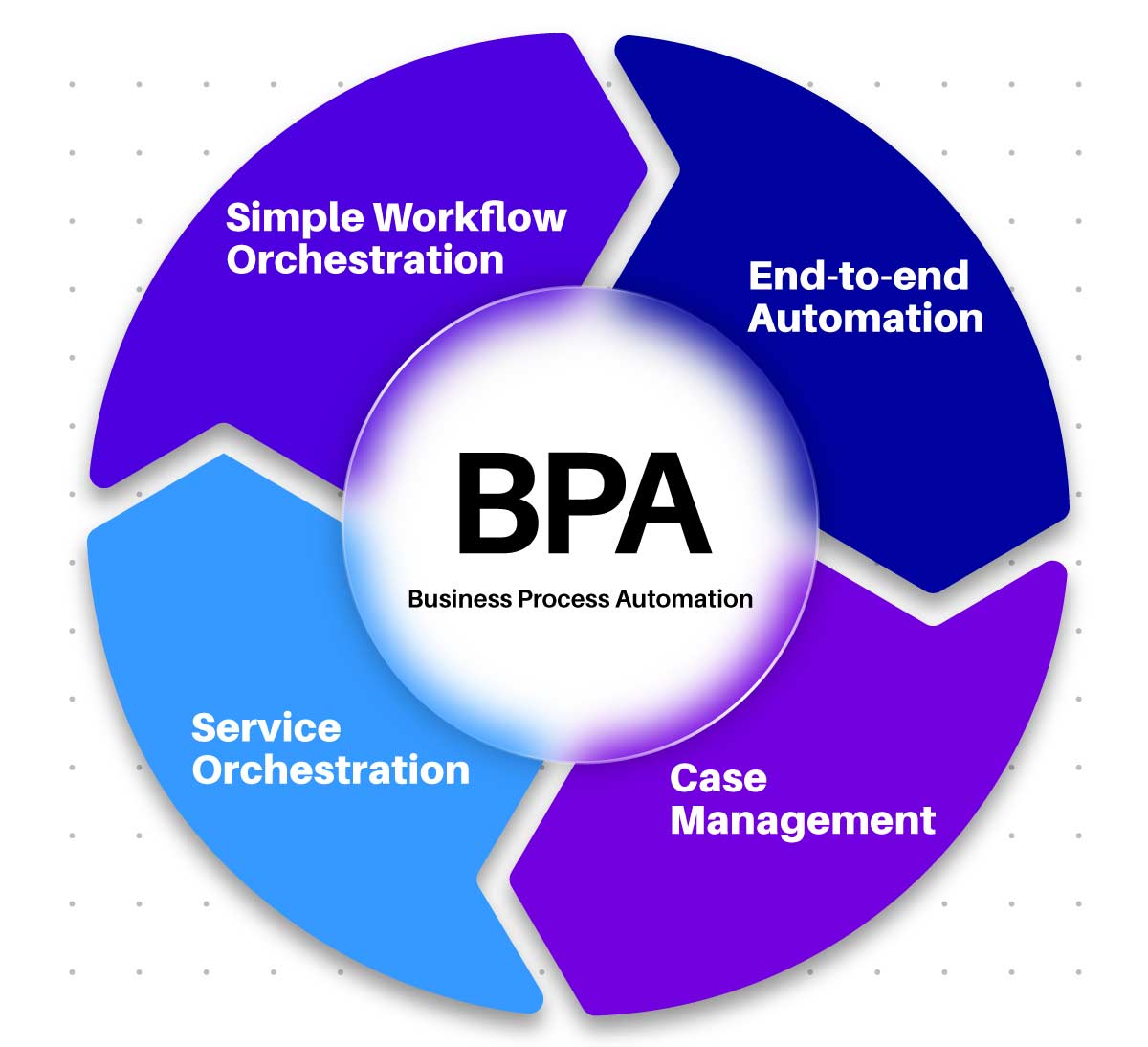
Unlocking Efficiency and Innovation: How Business Process Automation (BPA) Revolutionizes Organizational Operations
This is Part 1 of our Business Process Automation series. Continue to Part 2 here. Read part 3 here!
Business Process Automation (BPA) has already empowered many organisations to drive efficiency, cut costs, and integrate their operations more seamlessly, helping them streamline their operations and harmonize their processes. But what makes BPA so powerful? In this article, we dive into its four main concepts: Simple Workflow Automation, End-to-End Automation, Case Management, and Service Orchestration. We will also be explaining how the OMG standards of CMMN, BPMN and DMN play an important part in all this.
Harmonising Simplicity: Simple Workflow Automation
When a process has a small number of actors and systems, simple workflow automation is the way to go. Common characteristics of these processes are a smaller number of steps, fewer human approvals, and a concise life cycle. Here, BPA enables business technologists* to orchestrate their processes with their self-built, intelligent, process-centric applications, all without involving the IT development staff too much.
*From Gartner Glossary: Business technologists are individuals whose primary job entails technology work (such as Python developers hired in Marketing, data scientists hired in finance and accounting teams, or software engineers hired in R&D). They can also be citizen developers who build applications or automated workflows even though their primary job description is outside the IT department.
Navigating the Labyrinth: End-to-end automation
Automating everything in an end-to-end business process is not realistic. What matters is looking at the process and determining what is, and what isn’t, feasible to automate, and with which technology. Then you can start creating a continuous workflow from each process step, chaining automated tasks and user tasks together. Processes spanning multiple systems, teams and departments in an organisation tend to be long-running, have a large number of steps, and have complex business rules and decision logic. Being able to harmoniously orchestrate multiple automation technologies like RPA, intelligent document processing and task mining – interwoven with manual user tasks where needed, all available via a single interface – makes BPA the most viable automation approach of today and tomorrow for a reason.
Adapting to Unpredictability: Case Management
What about the processes that are unstructured, where exceptions are met at every turn? Here, BPA tools become the guides to executing the process, providing real-time operational context to drive actions and interactions among humans, systems, and bots. In Case Management, business users have the power to start additional process steps, both manual and automated. The focus shifts to dynamic adaptability, where each process instance is a unique journey where the unpredictable terrain of unstructured or semi-structured processes is navigated.
Service Orchestration with Microservices
As microservices become more and more commonplace, Service Orchestration emerges as the conductor, orchestrating multiple microservices cohesively. Scalability, resilience, and cloud-native deployment become key characteristics, enabling organizations to process a multitude of transactions seamlessly, and have real-time visibility into the proceedings.
OMG Standards: Building a Common Language
Business process analysts are already very likely familiar with OMG standards, at the very least BPMN (Business Process Model and Notation). As organizations embark on their automation journey, a common language becomes imperative, and OMG standards – CMMN, BPMN, and DMN – emerge as the unifying threads. CMMN (Case Management Model and Notation) paints the canvas for case management scenarios, BPMN visually captures the essence of business processes, and DMN (Decision Model and Notation) enables one to visualize the rules of a business process. These standards provide clarity, consistency, and interoperability in the diverse landscape of BPA initiatives.
In Business Process Automation, understanding the nuances of each use case is important. Simple Workflow Automation, End-to-End Automation, Case Management, and Service Orchestration, guided by the principles of OMG standards, allow you to orchestrate any business process. The bigger it is, the more benefits there are to reap. As organizations navigate the mosaic of BPA, understanding these capabilities is vital to make the vision of a harmonious future of streamlined operations and optimized processes a reality.

Continue Exploring Business Process Automation:
- Currently reading Part 1: Introduction to BPA
- Read Part 2: Deeper Insights into BPA – Explore advanced concepts in the second part of our series.
- Read Part 3: The Symbiosis of BPA and RPA – Discover the dynamic interaction in the final part of our series.
Experience the power of seamless automation with our Digital Workforce Outsmart service. From streamlining simple workflows to complex case management, our unified cloud service adapts to your business needs. It’s designed for efficiency and priced for value – see tangible results in every aspect of your operations.
Ready to transform your business?
Discover more about Outsmart and its benefits here →